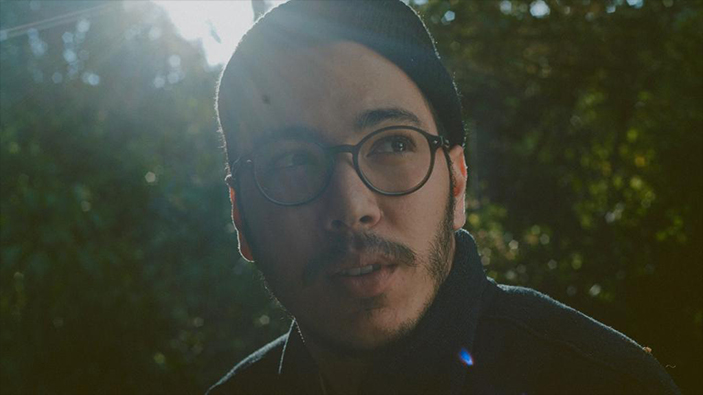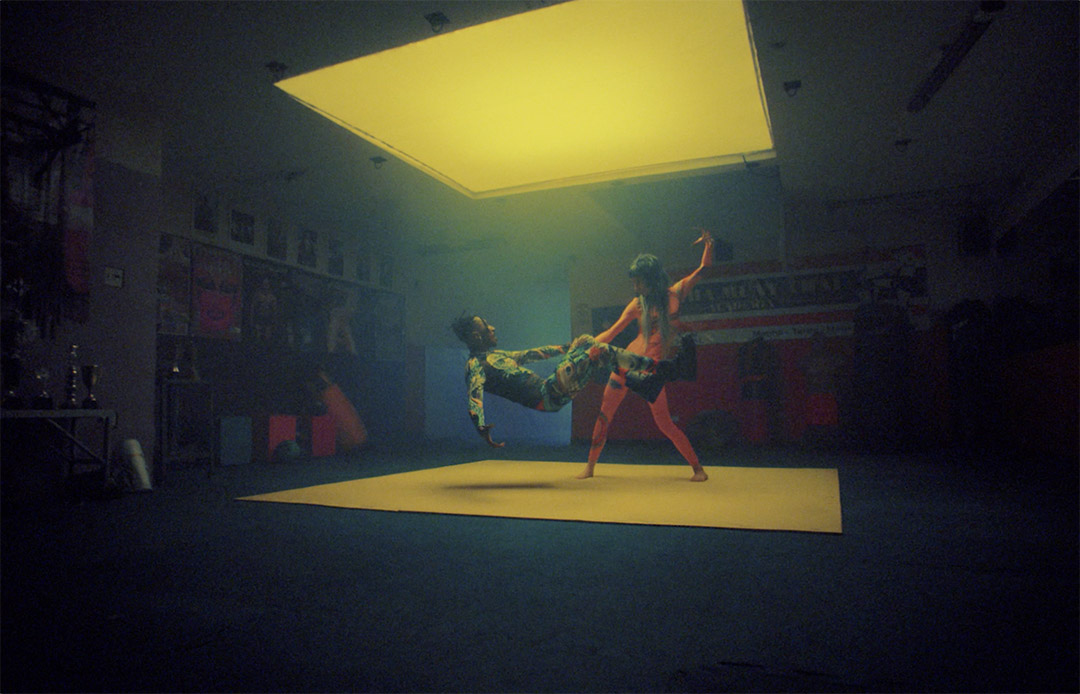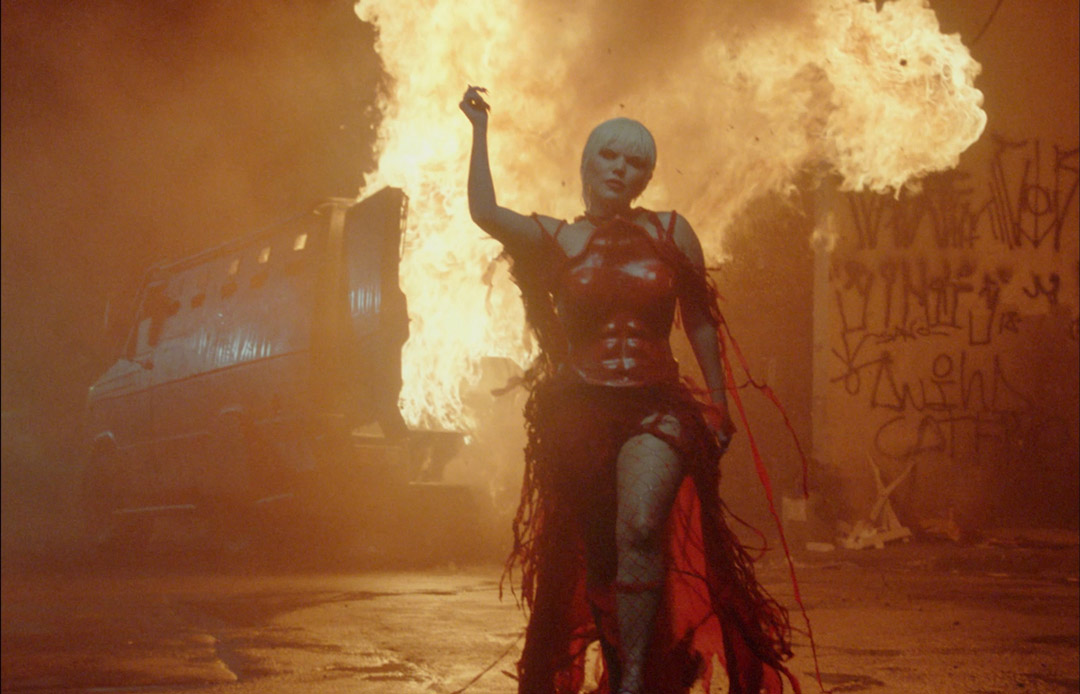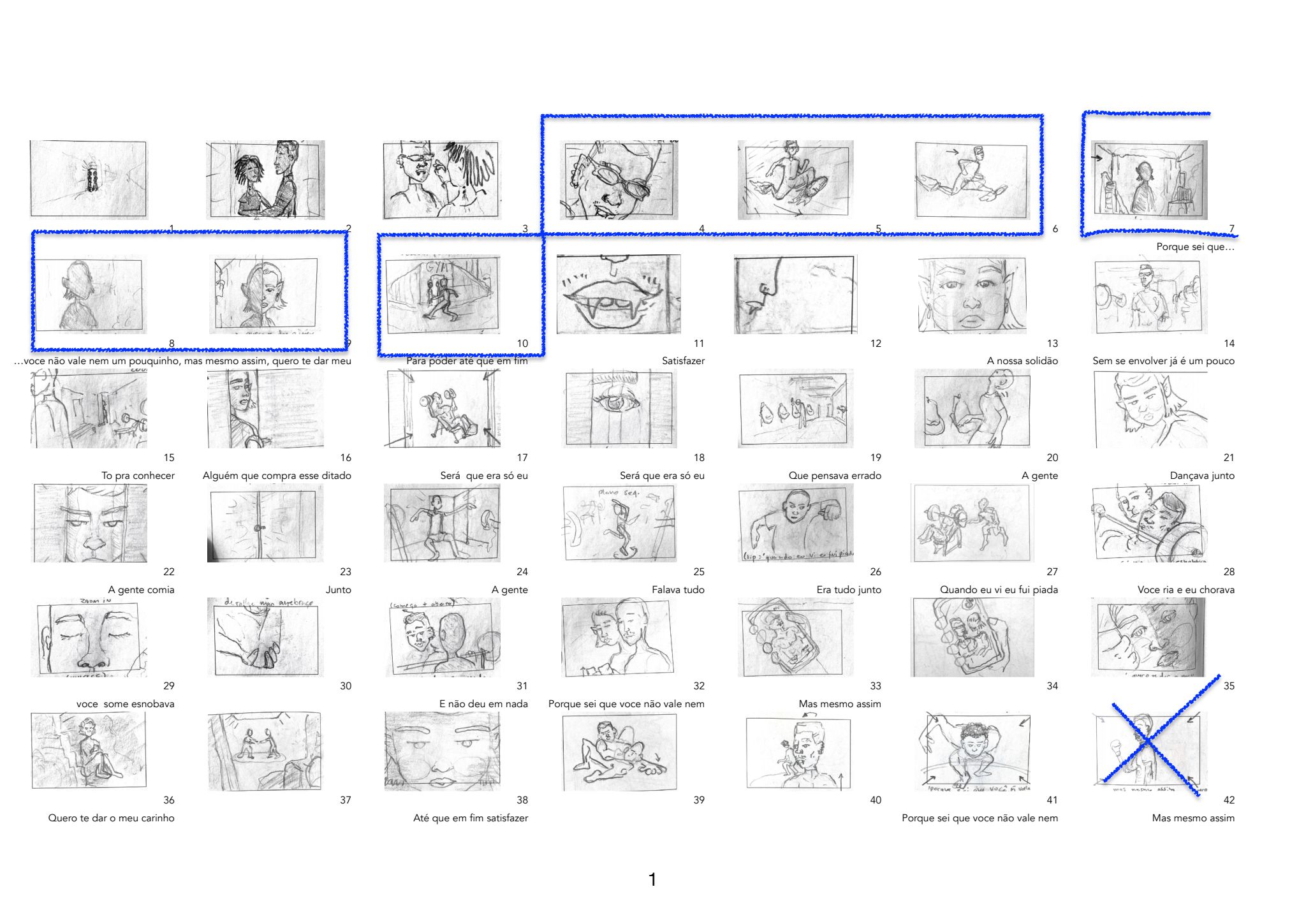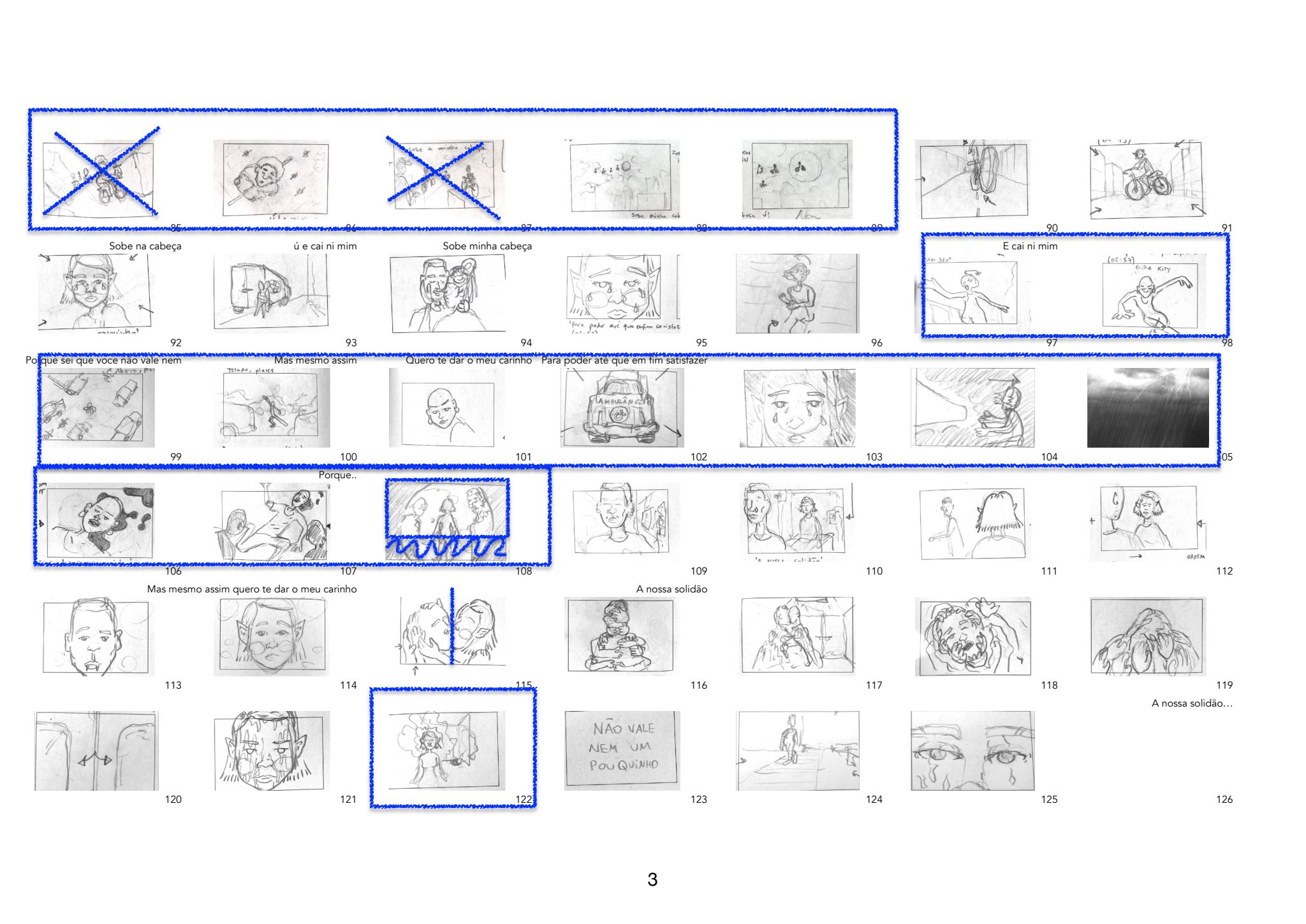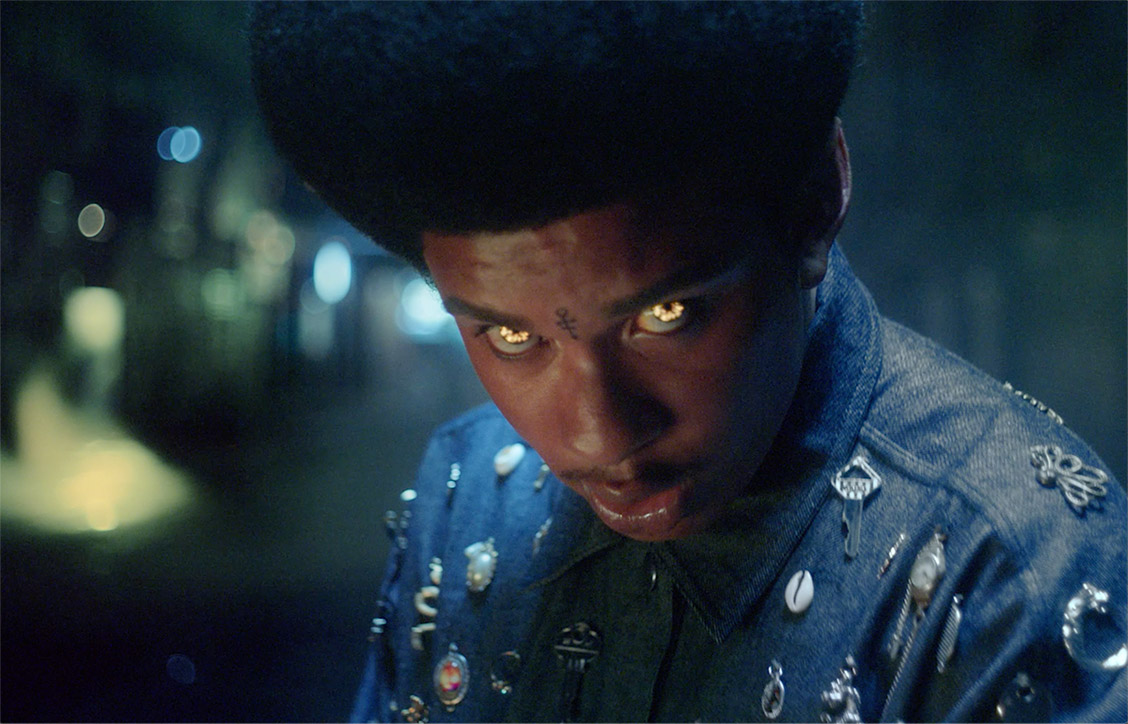
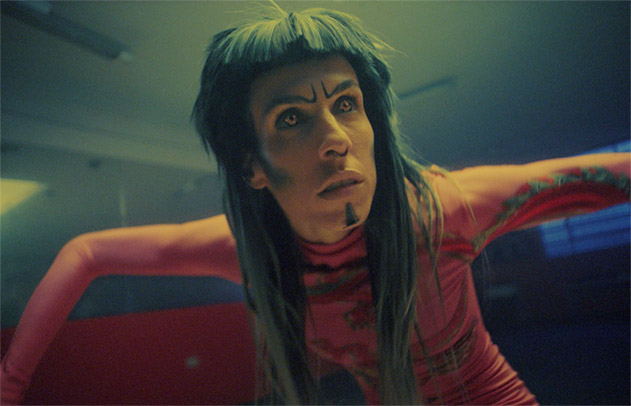
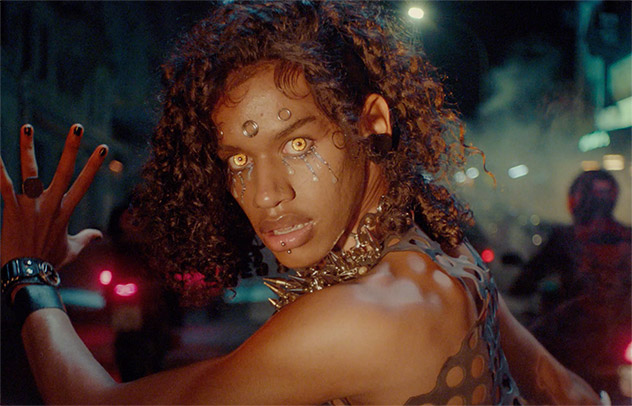
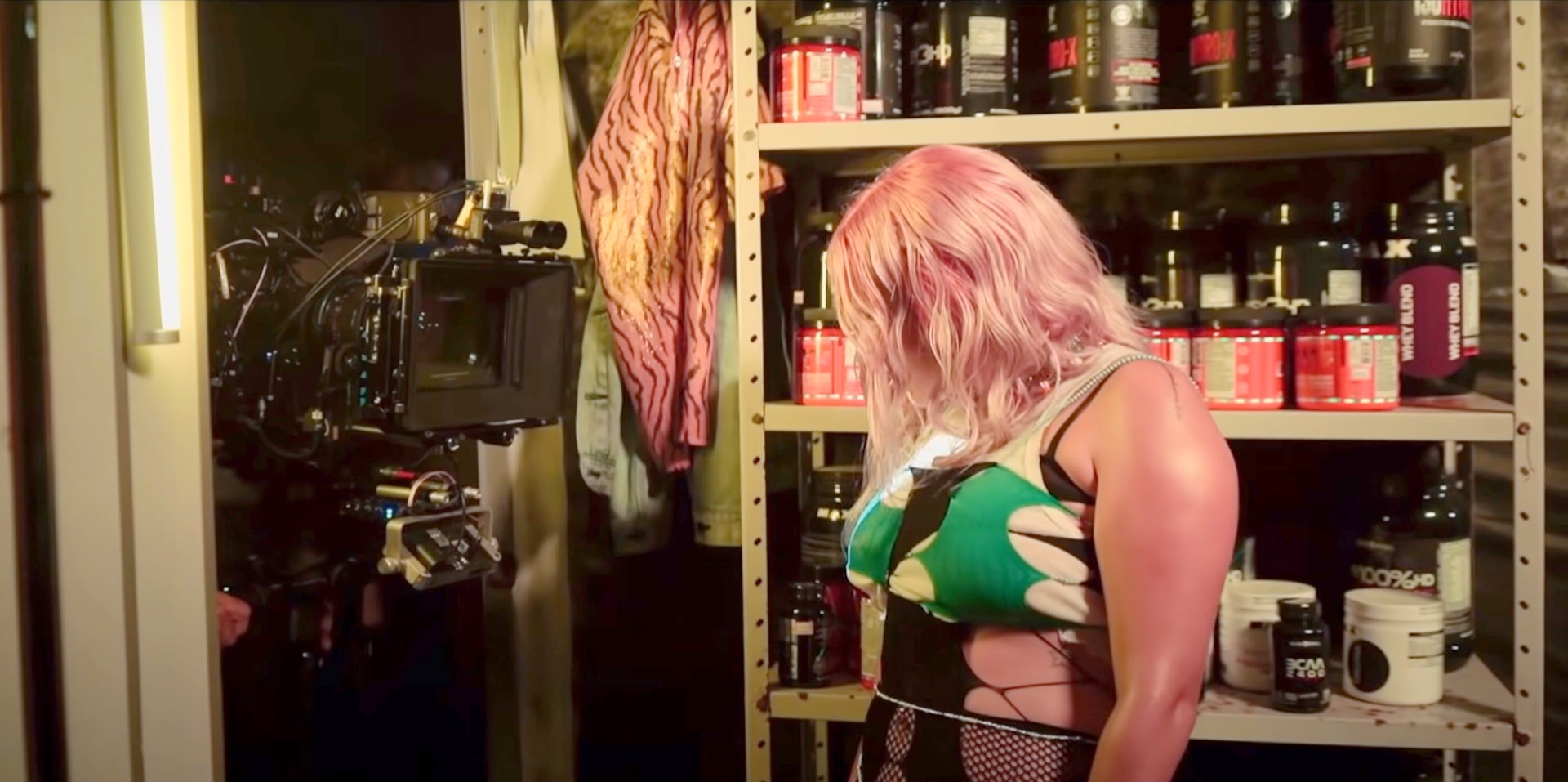
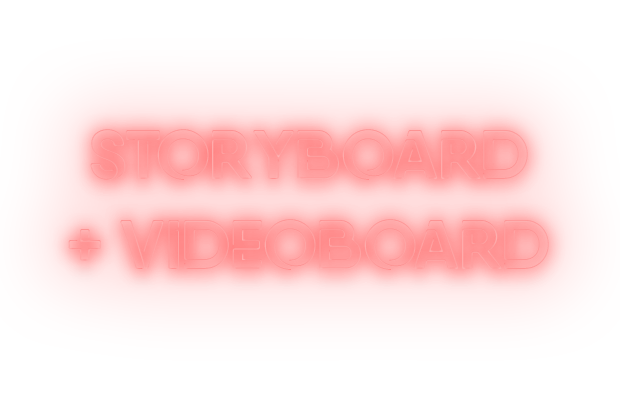
Many ideas that emerged in this first meeting remained very present in the music video until the final result. As a cinematographer, it’s great when we have a well thought-out foundation and at the same time we were open to improvisation. Marco, who draws very well, made a first storyboard, which helped a lot when we started visiting locations informally, without involving the production too much. We even went to the locations twice before the tech scout. From the drawings, we used the cell phone to simulate the camera movements of all the shots drawn so far, this became a videoboard. We set all the breakdown there, and we just changed a few things on the camera angles.
It was important to make this videoboard so that all departments could see the framing, camera movements and post production effects ideas. Together with the gaffers (Werick Dino and Jubel Magrão) and the key grip (Rodrigo Fidelis) we checked the video several times as a kind of cheat sheet during the shoot.
Most of the scenes are filmed outdoors on the streets of downtown São Paulo, so we didn’t have full control of the locations. For example, in one of the scenes, Carol and I thought about a set of lights and a curtain. It was a solution we found for a location (exterior-facade-gym) where we couldn’t open the door. This gave an illusion of depth to a theoretically flat background. This idea emerged so that it was possible to match with the interior scene of the gym. Until the moment I turned on the lights, I didn’t know if it would work, as the curtains were practically leaning against the door.
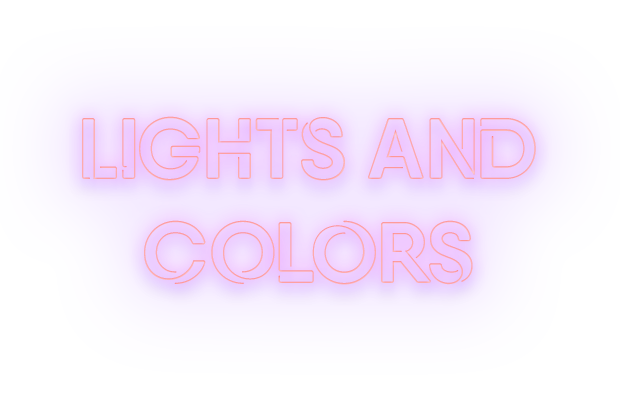
Regarding equipment, we chose the ARRI ALEXA Mini. We even talked about shooting in Large Format with an ARRI ALEXA Mini LF, but it would be expensive. We decided to go with a dirtier aesthetic and at the same time using Cooke 20-100mm, T3.1 Varotal zoom lens combined with Steadicam.
At ALEXA Mini’s open gate, the lens sometimes had some weird vignettes and flares, but all within the texture we chose. We complemented it with ZEISS Standard Prime T2.1. They are small and have a very interesting look.
The foundation colors were red, a yellow that played the role of tungsten, and a blue that is actually an ultra-cold white of 10,000K. At times we also used a green to highlight the smoke. The temperature on camera was 3200K, so the cold white would come up bluer.
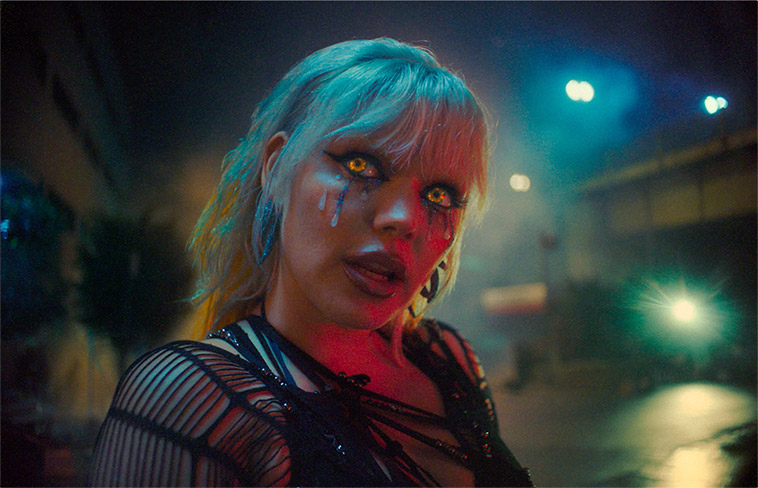
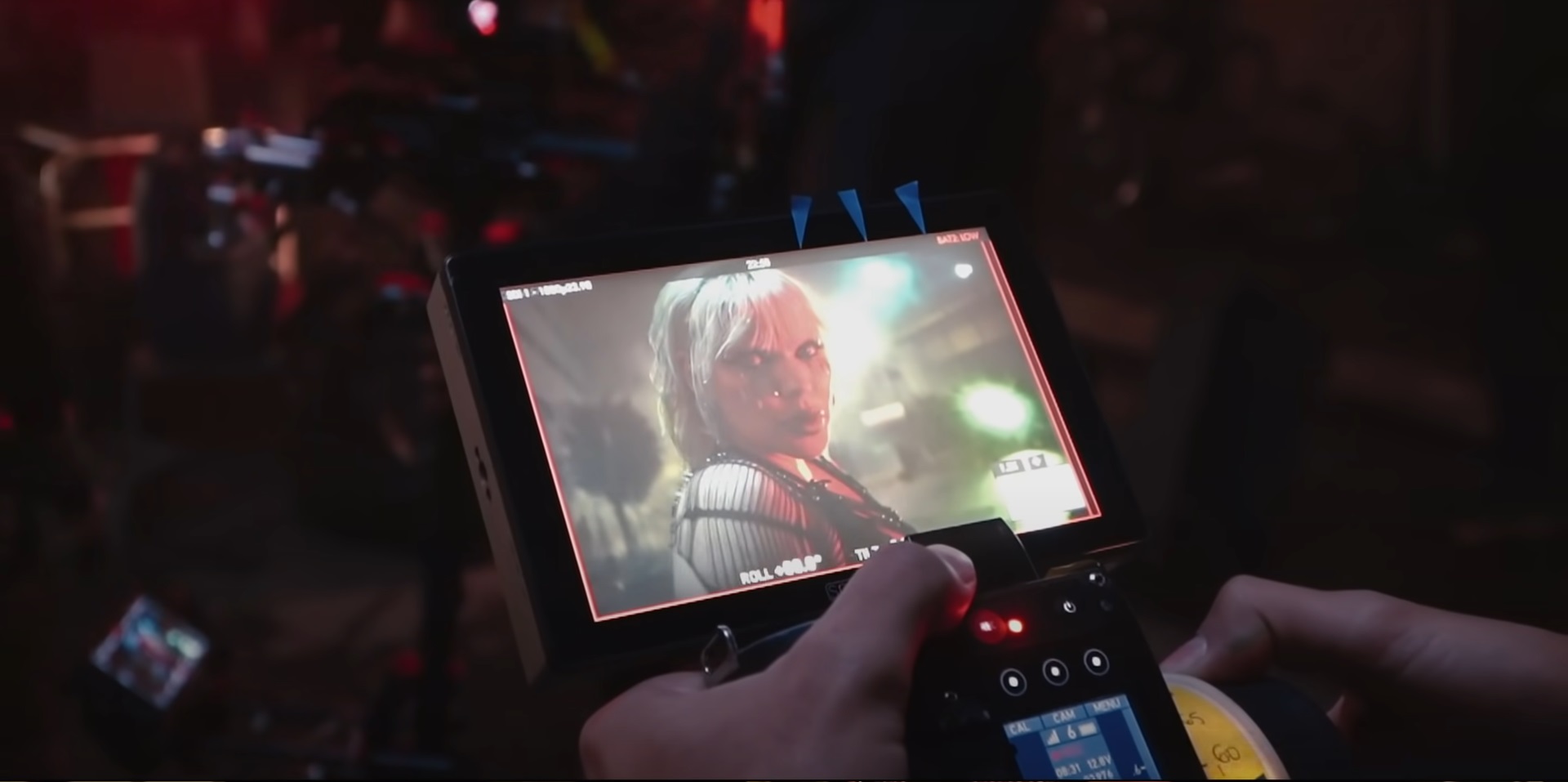
In many scenes, we lit Duda Beat’s face with yellow light, something theoretically difficult to do with a pop singer, but that was our white. Yellow was always specific and programmed to be “white”, and it varied depending on which lights we were using: Astera, SkyPanel, KinoFlo Select, ARRI L10-C, etc.
Many of the cyberpunk references are late-night movies with an intense aesthetic. A technological dystopia. Smoke helps bring volume to dark scenes. Our basic key light, on both units, was two or three not so bright lights with pre-selected colors. Smoke is in the background of scenes, lit with ARRI L10-C or ARRI L7-C. We also use some production truck headlights to illuminate walls in the streets.
In the gym scenes, I wanted to use diegetic lights, practical lights, which appeared in the frame. On the tech scout, however, I noticed that the walls were very white. Carol managed to get it dirty with posters and a railing on the ceilings. Combining photography with art, we spread TNT fabric on the ceiling, which helped as a negative fill and to bring density to the scenes, preventing the lights from bleeding too much, as well as playing an aesthetic role. Key grip Rodrigo Fidelis also set up beautifully disguised wall spreaders to fit KinoFlo Select panels.
At the gym location, we liked a mat and used it for the scene that simulates a Matrix effect. In the ceiling was an opening that was almost

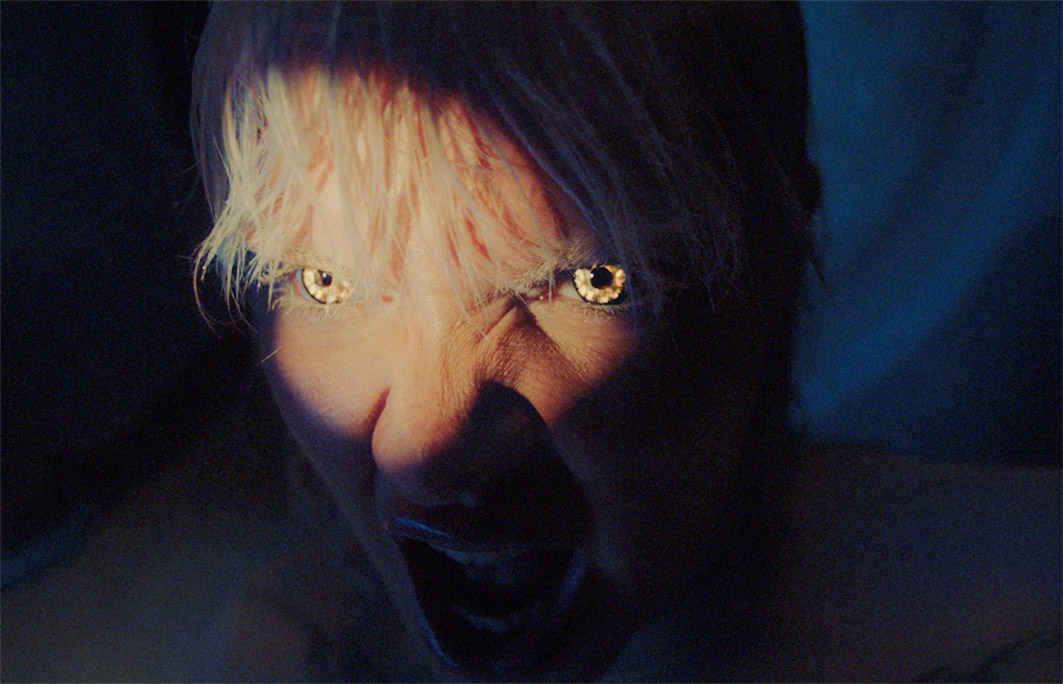
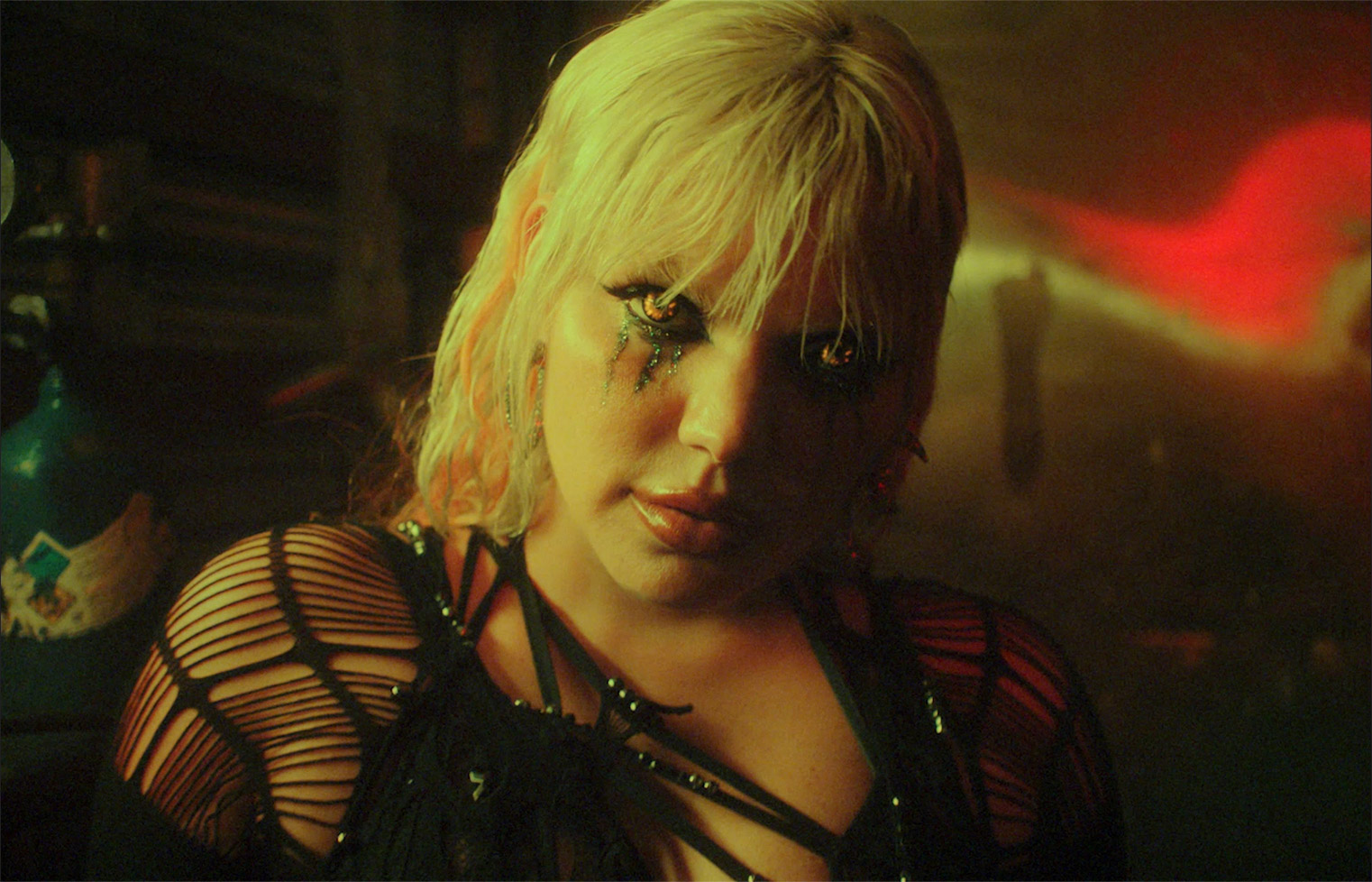

Most traveling shots in with a prime lens were done with the Steadicam operator running, something a little crazy, often with a wet floor. The chance of losing the axis is very big and it happened.
In the first scene when Duda Beat’s face appears, the silhouette appears and then we meet her. It was a super low low-mode, but the camera had to go up to her height. This upward movement is very difficult to do on the Steadicam, so we built a hidden ramp on set.
Uyll’s race with the feet of fire was filmed from a moving tow car with a very low platform. We put a crane on top, one of those very old and sturdy ones that carry camera operators. At the end of the arm, six meters out, we attached the cables that suspend the actor and a SkyPanel S30-c that flickered. The camera was very low, at the end of the platform. The fire on the foot was real, with flames safely controlled by Martão.
We used a light drone from Renato Passarelli to light the scene of the floating body. The light had to come from above, as if Duda was going to be abducted. It was really cool, but it’s a complex shot. The drone’s battery lasts only 8 minutes. The lights are attached to a Mōvi, which makes the structure large, with the risk of hitting the street lights in the center of São Paulo.
In the bike scene, the key was post-production. We filmed all that during the day, day for night. Initially this moment would be a complete solar cycle, but as we filmed the other sequences and looked at the material, we gradually realized that it wouldn’t make sense to be day. It had to be night.
The only lighting, as it was a reduced team day, was a 4KW HMI that we used to bring up the face of singer Trevo, who is the main character of that moment. As we were going to bring density and lower everything in post, it was very likely that his face would go down a lot too. We filmed on a cloudy day, between shadows of buildings. What reinforces the night atmosphere the most are the windows with lights on in the buildings, which were inserted in the post. Cirilo confirmed that it would work, and at that moment my insecurities went away.
After filming the characters cycling in the street, we filmed the flight of bicycles in an open-air parking lot, where we set up two six-meter high chroma key backings. It was a kind of outdoor studio, almost unlit.
In chroma, we had to repeat the same angles as the street scenes. We filmed the movements from various angles with a Freefly Mōvi Pro and an electronic menace arm that I operated through the MMIC of the Mōvi Pro. The bikes were suspended by cables assembled by Martão, a super professional in effects. We only use two cables in the front and one in the back, to avoid going through the actors’ faces. The only time we used Mōvi in the movie was this half-day.
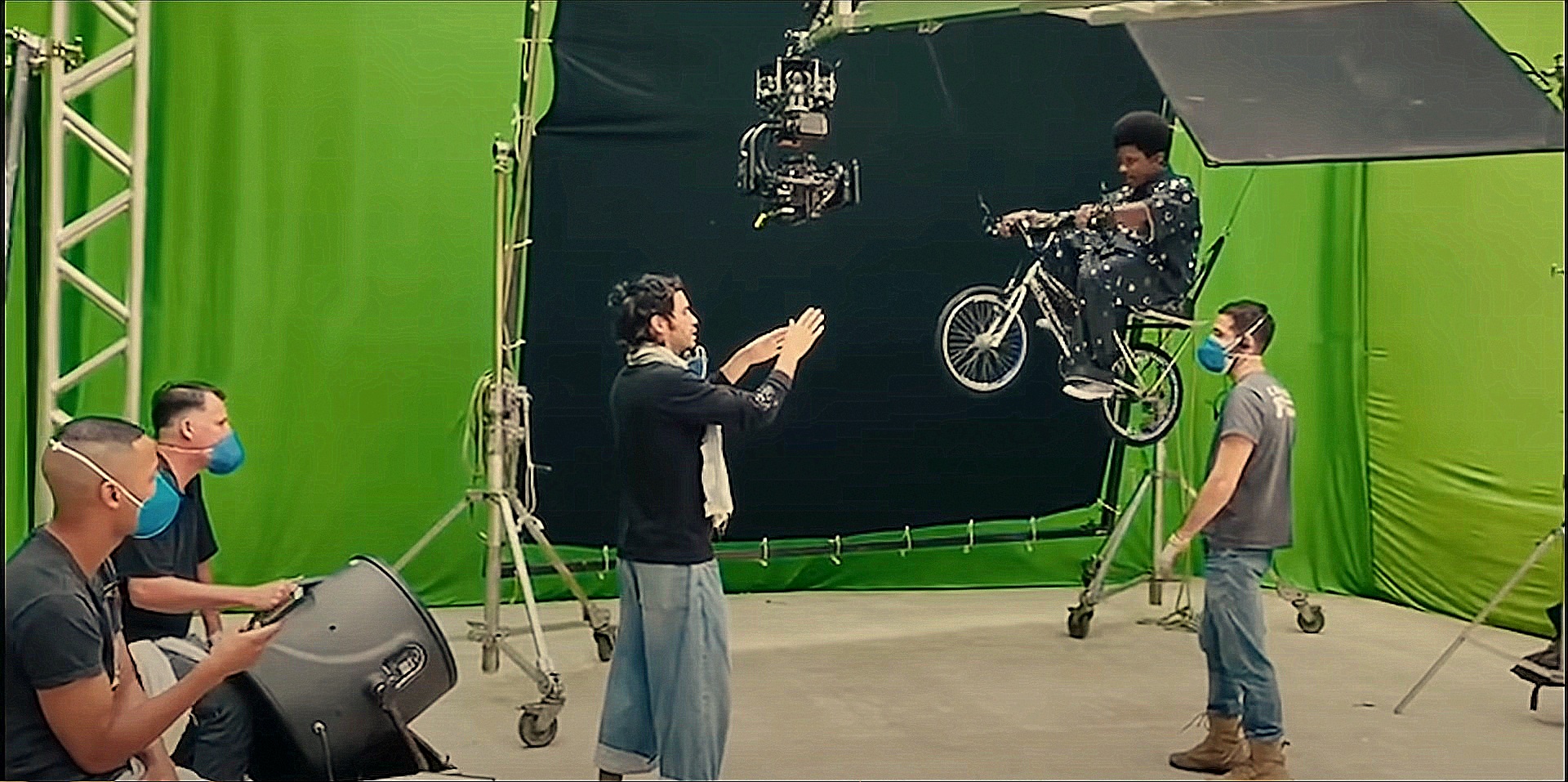

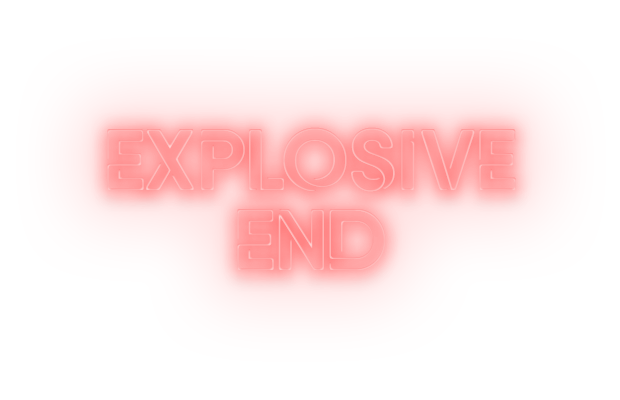
To simulate the inside of that ambulance-truck from the future, we filmed inside the back of a small truck, where Carol set up this kind of reptilian ambulatory scenario. I saw that we only needed a yellow main Astera and a red beam coming from outside through a hole. There was no room to create that much. The idea was to have the practical light as a key, but with another color to break the monochrome and connect it to the rest of the film. When the internal light goes out, that red dominates that action.
The explosion at the end was also real. There were three takes, with three explosions. The fire is real and we don’t even need to increase much in the post. The first take is more difficult to measure with the light meter because you don’t know exactly how intense it’s going to be, which can overexpose everything and clip the flames. Another variable was Duda Beat herself, who couldn’t fake her first reaction to that first explosion. The camera move is a zoom out in slow motion.
These were some technical insights of this movie. In addition to being a great professional learning experience, I experimented with new techniques as a cinematographer. I was very happy with the result. And of course all this is only possible with a super competent, aligned and creative team.
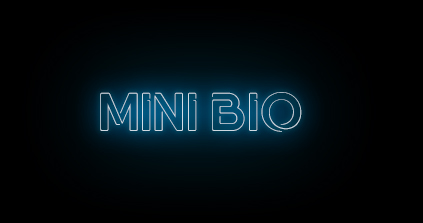
Finalist for the ABC (Brazilian Association of Cinematography) award in 2017 for the photography of the student short film “Obrigados”, Fabio Politi graduated from FAAP (Fundação Álvares Penteado) and works in São Paulo. In 2018, he shot the short film “Jacky and the BeantCoinstalk”, participant of the project “Iconic Stories in 6”, promoted by Youtube at the North American festival South by Southwest (SXSW), and signed the cinematography of the documentary “FYA: Um Filme Remix sobre o Dancehall da Quebrada”, released on the 4:3 platform of the British channel Boiler Room; and the documentary “O Canto das Pedras”, winner of best film at the Penedo de Cinema Circuit. In 2019, he made the short film “Amor ao 20 Anos”, screened at the Gramado Festival competitive show. Currently, he has been working as director of photography for commercials and music videos for artists and brands such as Duda Beat, Xênia França, O Suit, Djonga, Emicida, MC Donalds, Puma, Nike, Nissan, Tigre, Rappi, among others.
